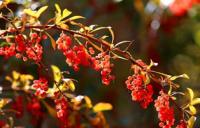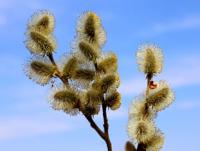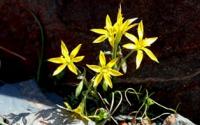Вы здесь
Flora of Ala-Archa park.




Flower Tours in Ala-Archa park.
“Botanists have a term - forbs. It usually refers to flowering meadows. Motley grass is an interweaving of hundreds of various and cheerful flowers, spread out like continuous lakes along the river floodplains"
Konstantin Paustovsky.
Botanical tours in Ala-Archa park.
In the Ala-Archa gorge, 1,100 plant species have been found, which is about one third of the species of the entire flora of Kyrgyzstan. The richness and diversity of the vegetation cover is created due to climatic and microclimatic conditions, exposure of slopes and different types of soils.
In turn, altitude is an important factor determining the differences in climate and other plant living conditions. Therefore, the vegetation cover here obeys the law of vertical zoning and forms a number of altitudinal belts.
General scheme of altitude zones in the Ala-Archa gorge:
Foothills 750 - 900 meters above sea level. Wormwood-ephemeral wheatgrass dry steppe, developed for agriculture.
800 - 1600 meters above sea level. The belt of foothill small turf-like grasses, mainly fescue steppes.
Mountains of medium height, 1500 - 2800 meters above sea level. A belt of tall-herb forb cereal meadows and meadow-steppes, shrubs, juniper, deciduous and spruce forests and woodlands.
Highlands. 2600 - 3200 meters above sea level. A belt of alpine meadows and dwarf juniper.
3000 - 3700 meters above sea level. Alpine meadows belt.
3500 - 4875 meters above sea level. Nival belt.
The lower part of the middle and high mountains is occupied by meadows and meadow-steppes, the main background of the vegetation of which is formed by sassyk-kurai, larkspur, various types of legumes, clover, some cereals, etc.
From the shrubs growing on the slopes or in the undergrowth of spruce and juniper forests, you can find small-leaved honeysuckle, bristly hair, Karelin, Korolkov, blue and Albert, Meyer's currant and variegated, oblong barberry; Talas rose, flat-type, Fedchenko, cotoneaster multicolor and black-fruited, Semyonov's euonymus.
Forests in the Ala-Archi region occupy a relatively small area. At the bottom of the Ala-Archi valley and on the northern shaded slopes of the Aksai, Adygen and Topkara-gai gorges, there are forest areas of Tien Shan spruce.
There are juniper forests on the slopes of the right bank of the Ala-Archi gorge and in its side gorges. On steep slopes with outcrops of rocks and talus, there are juniper and deciduous woodlands. On one section of the Ala-Archa valley (2000 - 2200 meters above sea level) near the river, there are areas of mixed spruce and deciduous forests with a predominance of the latter.
In the spruce forest, birch, Turkestan mountain ash and willows are usually mixed with the Tien-Shan spruce. The underbrush in this forest is shrubs and Siberian juniper. The herbaceous cover consists of small-borer, codonopsis clematis, willow-herb, creeping clover, Siberian prince, Altai swimsuit, etc.
Hemispherical juniper forests occupy a much larger area in the Ala-Archa gorge than spruce forests. In some places they are of a park type, but in some places they form rather dense thickets. All of these types of shrubs serve as undergrowth.
The herbaceous layer is characterized by a Siberian rosewort, a cold pepper, an alpine peel, a low cinquefoil, an Evers stonecrop. Thyme, ziziphora, catchment area and other plants are also found here. In open areas of forests grow crowded bell, patrinia, Velcro, corydalis, pyrethrum, bedstraw, cuff, Kuril. tea, poppy, alpine mountaineer, etc.
The most characteristic plant of the subalpine belt is the juniper elfin. Its bushes grow in the middle of a forb and cereal meadow with mountain-loving flemis, geraniums - rocky and Fergana, iris, bathing suit, forget-me-nots, anemone, onion, black and purple onions, etc. Feather grasses are found in the steppe areas.
The vegetation of the region's alpine belt is sparse and mosaic. The main vegetation formations of the alpine belt are alpine low-grass meadows, alpine low-grass steppes and meadow-steppes with fescue, feather grass, targyl, cinquefoil, edelweiss and wormwood, high-altitude cold deserts with dryad flowers and some other plants. In humid places, near mountain streams and springs, there are saz meadows with buttercup, forget-me-not, etc.
Not a single climber who has visited the Aksai camp leaves unnoticed a stream with Turkestan primroses growing along its banks. Arboreal and shrub vegetation is no longer there. The last high-altitude belt - nival - has no vegetation as such.
Among the pile-up of stones of fresh non-sodded moraines in the immediate vicinity of eternal snow and ice, patches of primary soil are formed in depressions and crevices, on which frost-resistant plants grow in individual specimens.
Plants are common here: dryadant pillows, amazingly beautiful shaggy chamomile (edelweiss), alpine aster, violets, radiola, chorispora Bunge, golden adonis and others.
Authority:
A. Kuznetsov "Alaarcha". “Defeated peaks. 1973 - 1974 ". “Mysl”. Publishing House, 1976.
Photos by
Alexander Petrov.







